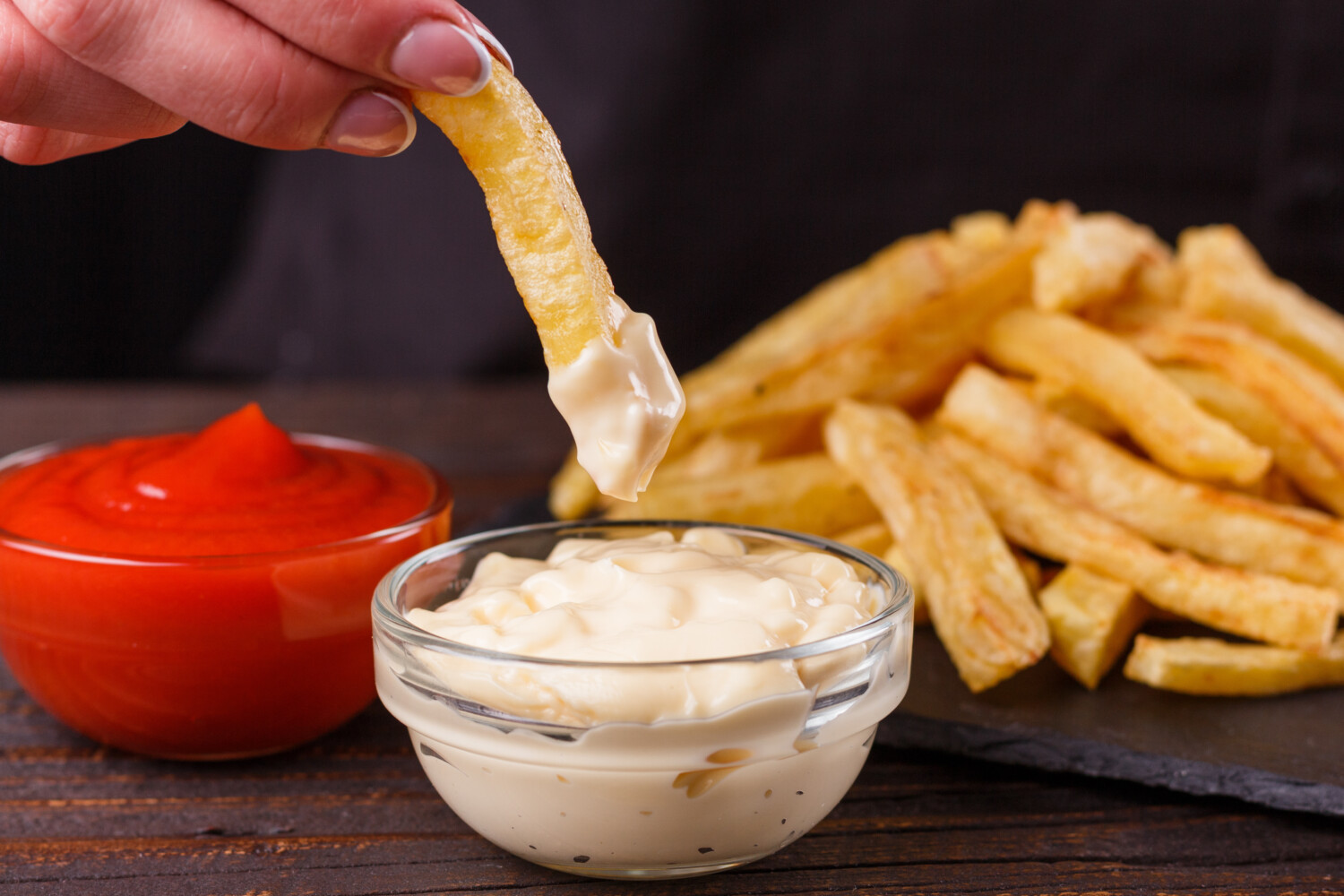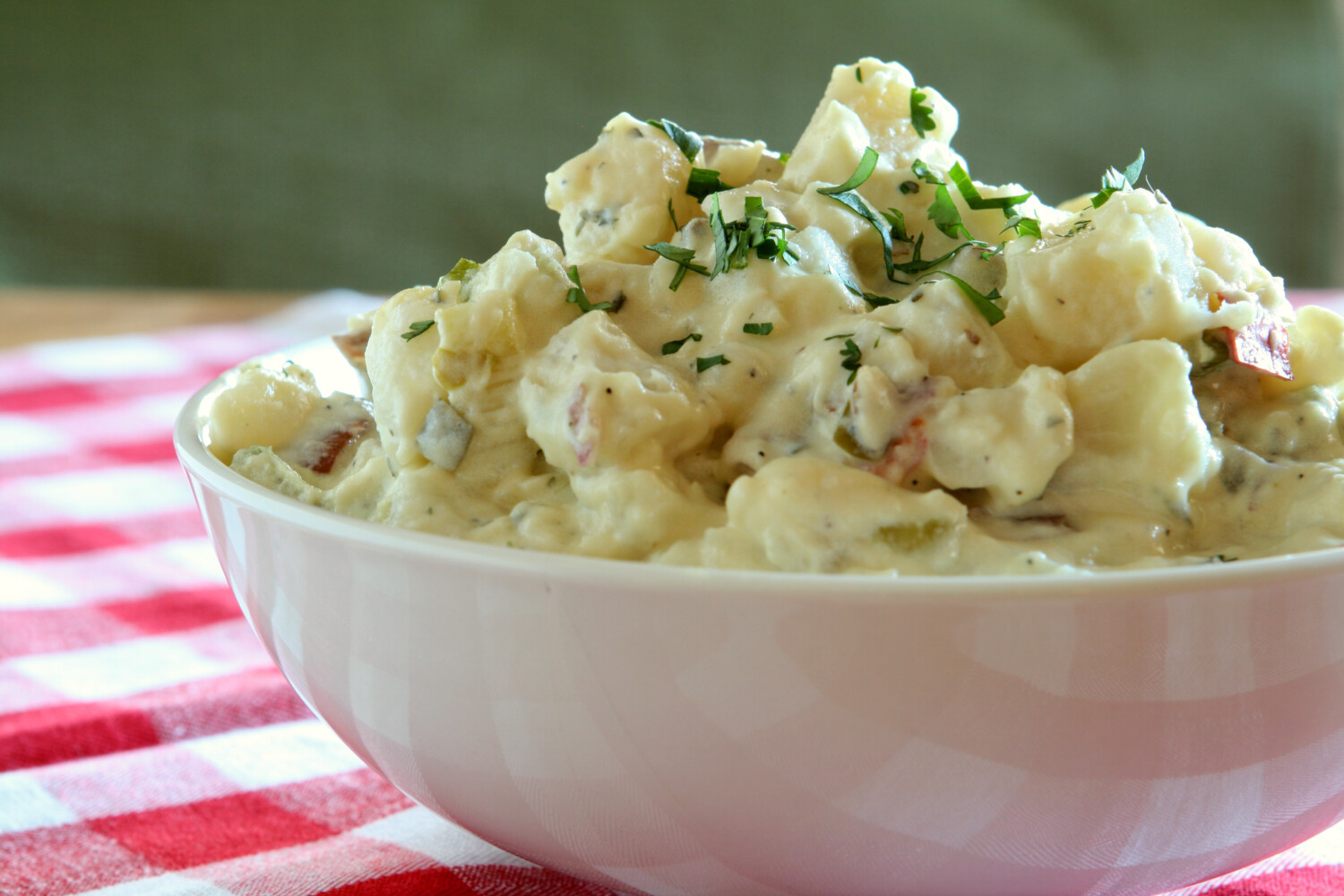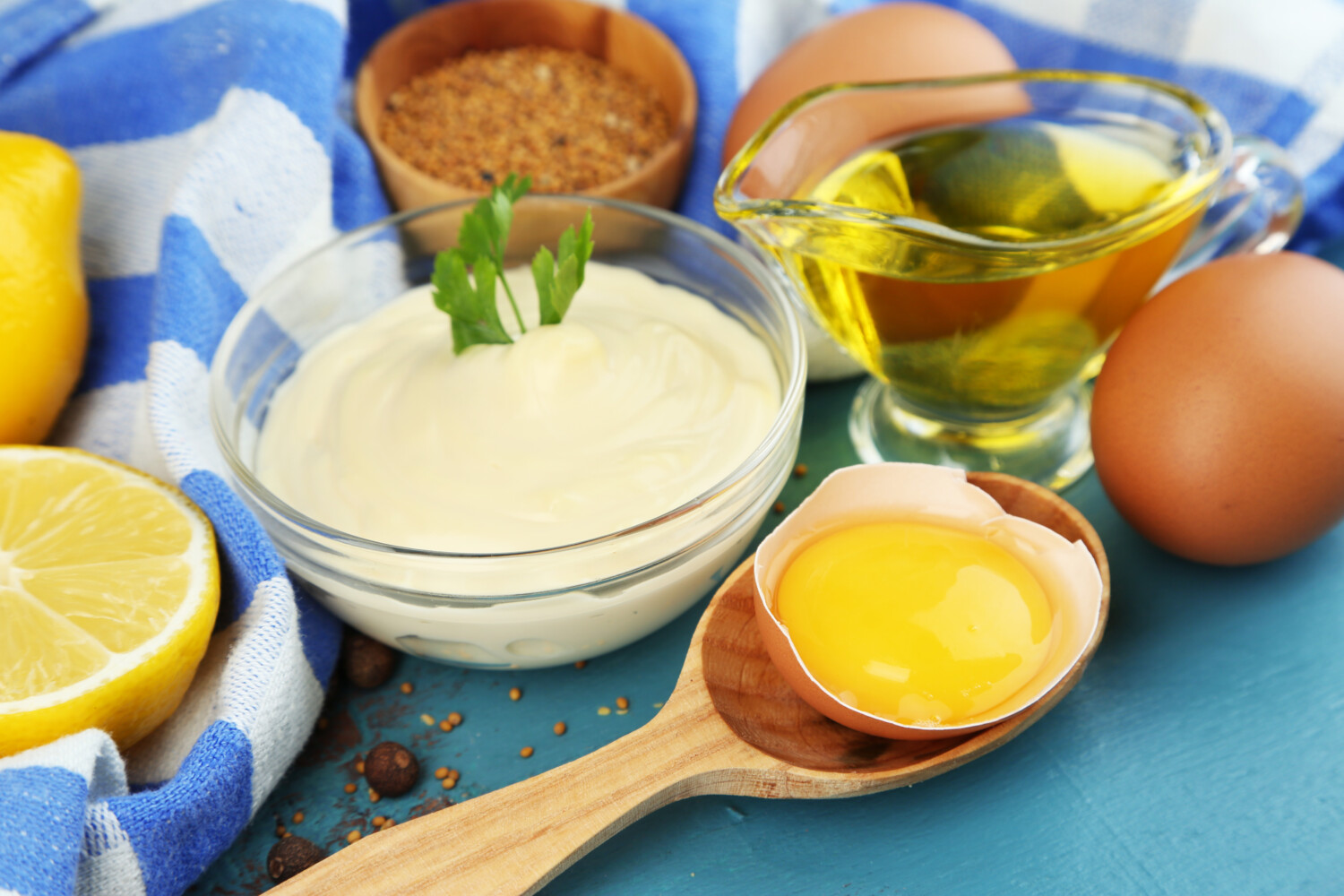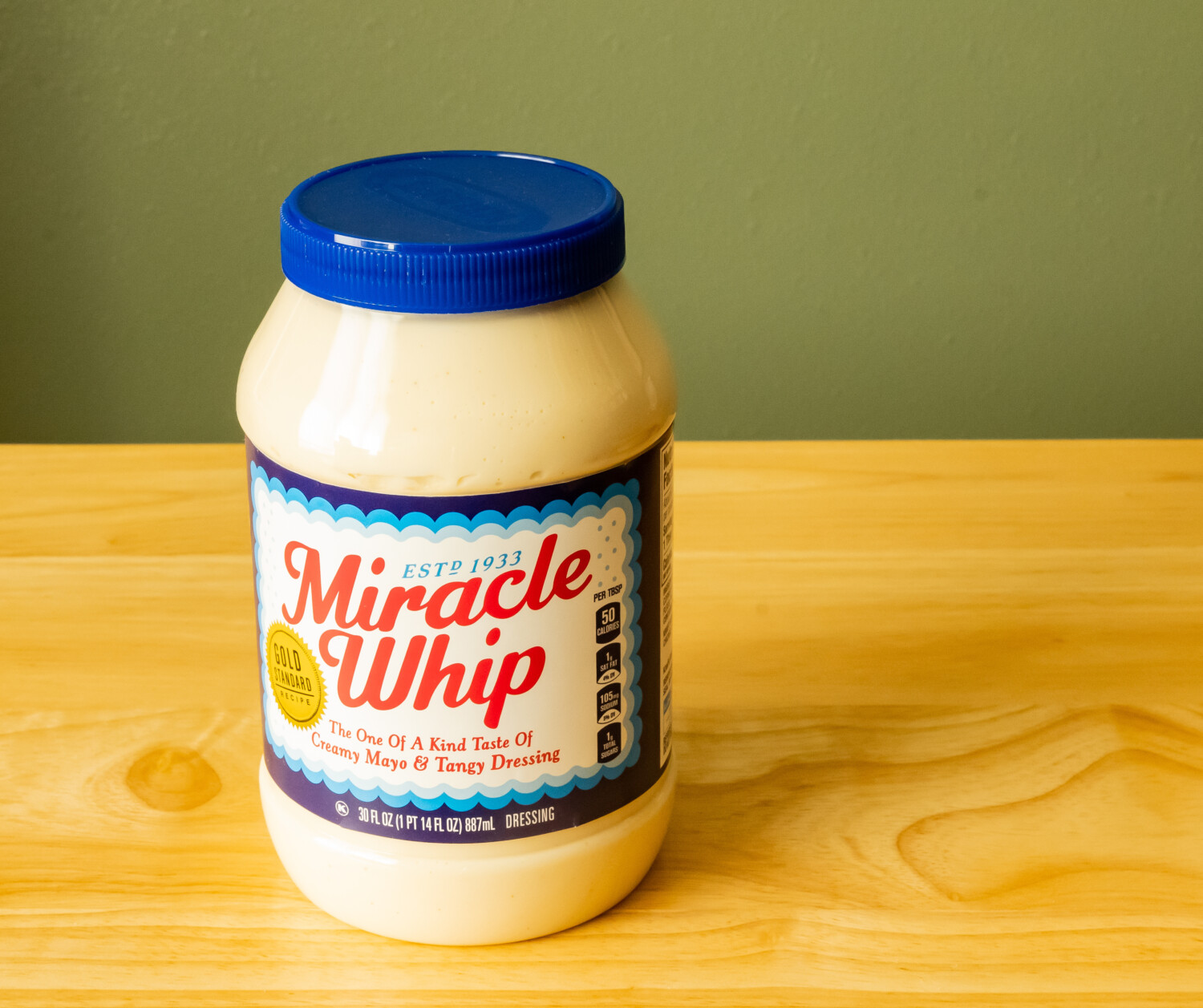When you’re making a sandwich or looking for a substitute in baking and cooking, you might turn to mayonnaise. Mayonnaise is great as a condiment for sandwiches, for dipping French fries into, and for cold dishes such as pasta salads. And many home cooks swear by mayo when it comes to creating the best grilled cheese sandwiches.
However, you’ve probably also heard about Miracle Whip, which is very similar to mayonnaise — but not identical. So what’s the difference between mayo and Miracle Whip?
Mayo Versus Miracle Whip
Mayonnaise in its most basic form has vegetable oil, eggs, water and lemon juice or vinegar. Other seasonings and additives or preservatives are sometimes included.
Miracle Whip is a mayonnaise-like product first created in 1933 as a cheaper option than mayo. It has the same ingredients as mayonnaise, but it adds a number of others, including sugar, mustard and spices. Miracle Whip is noticeably sweeter and some say tangier than traditional mayonnaise.
In order to be labeled “mayonnaise” the U.S. Food and Drug Administration (FDA) requires that a product have at least 65% vegetable oil in it by weight. Miracle Whip doesn’t meet this qualification, so it is called a “dressing” by the FDA.
In the contest of mayo versus Miracle Whip, the latter is lower in fat and has fewer calories than mayonnaise. However, Miracle Whip’s higher sugar content (from high fructose corn syrup) doesn’t necessarily make it a “healthier” option.

When To Use Mayo Versus Miracle Whip
Basically, you can use Miracle Whip dressing anywhere you use mayo — on sandwiches, in dips and for recipes. But because of its sweeter and tangier flavor, there are a few recipes in which it might not work as well.
For example, if you’re baking, you may want to stick with mayo because of its full-fat profile. The lower-fat Miracle Whip can separate and become greasy during the heating process, and it may not have the right egg-to-fat proportion for some baking recipes.
There are also recipes that may benefit from Miracle Whip. For example, potato and egg salads get more flavor from a Miracle Whip infusion.

Making Mayo Or Miracle Whip At Home
In both homemade and store-bought mayonnaise, egg yolks are used as the emulsifying agent that holds the entire mixture together. That’s because the yolks contain lecithin, a fat emulsifier. You need an emulsifier to keep the water and oil in mayo combined. The lecithin coats droplets of oil and keeps them from separating out into greasy layers.
America’s Test Kitchen has a recipe for homemade mayo that starts incorporating some of the oil into the rest of the ingredients before combining everything in a food processor. This makes sure the emulsion process works.
Store-bought mayo products last much longer than the homemade kind because of the preservatives put in them. However, one way to extend the life of mayo you make in your own kitchen is to add whey.
If you want to try making Miracle Whip at home, Top Secret Recipes purports to have a recipe that mimics the dressing, as does Beyond the Chicken Coop. These add paprika, dry mustard, salt and sugar (and garlic powder in Top Secret Recipes’ version.)
And if you need ideas for what to make with Miracle Whip, Kraft Heinz has almost 300 recipes for you on its site.

Where Did Miracle Whip Come From?
Miracle Whip came on the market in 1933 during the depths of the depression. Its maker, Kraft, promoted it as a cross between mayonnaise and salad dressing and debuted it at the Century of Progress International Exposition (also known as the Chicago World’s Fair).
Miracle Whip was also considered another take on “boiled salad dressing.” In Britain, a boiled dressing product called Heinz’s Salad Cream rolled out in 1914 — well before Miracle Whip’s debut.
Miracle Whip took its name from the emulsifying machine that whipped ingredients together. This machine helped create Miracle Whip’s creamy consistency, too.

Still, the mayo versus Miracle Whip debate rages among people who have a strong preference or dislike for one or the other. Often, what you were raised eating is what you prefer.
Whichever is your pick, now you know a little more about the differences between both.
This story originally appeared on Simplemost. Check out Simplemost for additional stories.


